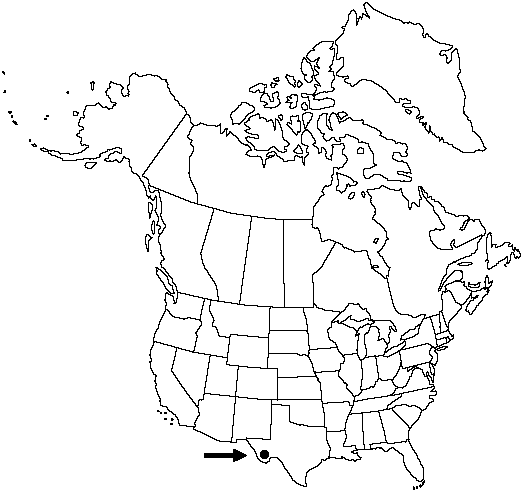Pleopeltis polylepis var. erythrolepis
Amer. Fern J. 70: 9. 1980.
Stems long-creeping, branched, 1–2.5 mm diam.; scales lanceolate-attenuate, centrally clathrate with cell luminae clear, glabrescent or with scattered reddish-brown hairs. Leaves to 10 cm, weakly hygroscopic. Petiole round in cross-section, sparsely scaly; scales rarely overlapping, margins fringed-ciliate. Blade ovatelanceolate to oblanceolate, simple, 0.5–2 cm wide, margins entire, densely scaly abaxially, sparsely scaly adaxially; scales bicolored, broadly ovatelanceolate, 0.5–1 mm wide, centers brown, clathrate, margins transparent, irregularly fringed-ciliate. Venation complexly anastomosing, fertile areoles with several included veinlets. Sori round to oval, discrete, surficial to shallowly embossed, soral scales attached to receptacle. Spores smooth with scattered spheric deposits, ca. 59 µm.
Phenology: Sporulating summer–fall.
Habitat: Forming extensive mats on porphyritic rocks in Upper Limpia Canyon
Elevation: 2300 m
Discussion
The only known North American population of Pleopeltis polylepis occurs in the Davis Mountains of western Texas. It is placed in variety erythrolepis, which differs from var. polylepis, the variety common in Mexico, in that the scales on the abaxial surface of mature blades are fringed-ciliate rather than entire to erose, and mostly ovate-lanceolate rather than spheric. In addition, the scales of the abaxial blade surface tend to be more abundant than in var. polylepis. The two varieties are very similar, however, and a broad region of overlap exists in parts of Mexico where plants of intermediate morphology occur (T. Wendt 1980). In general, var. erythrolepis occurs in northern Mexico and Texas, and var. polylepis ranges from southern Mexico to Guatemala.
Selected References
None.
